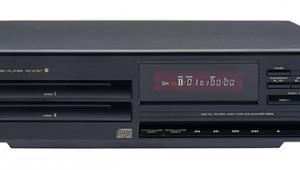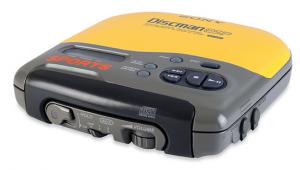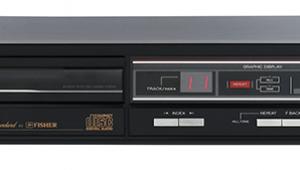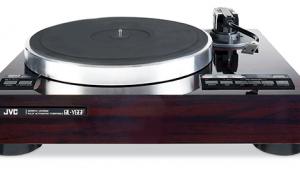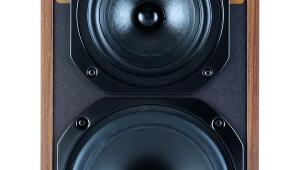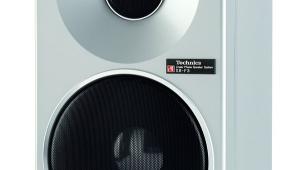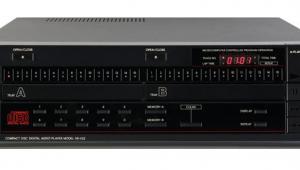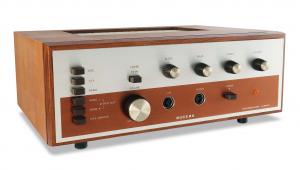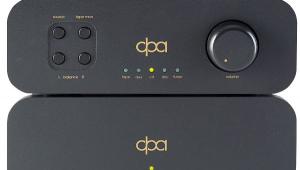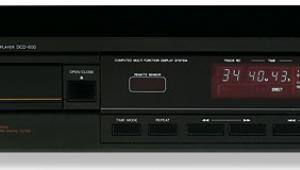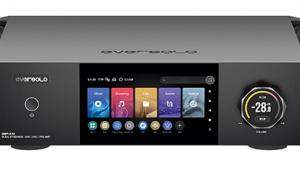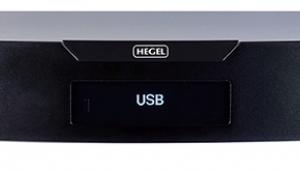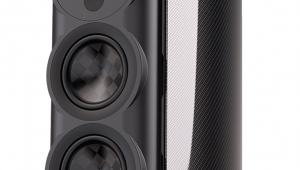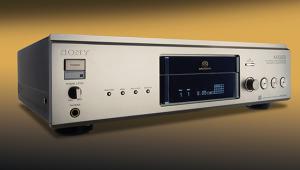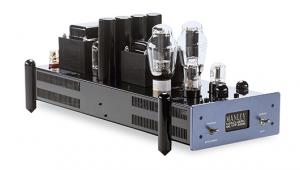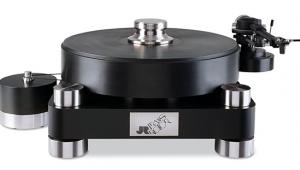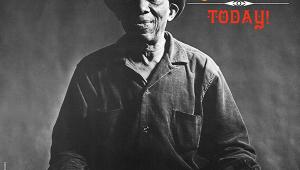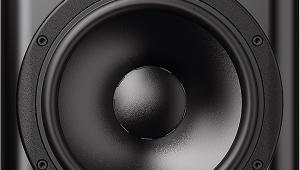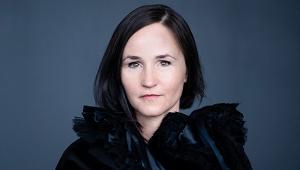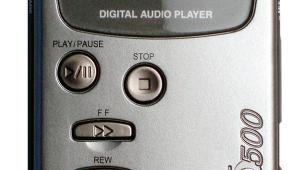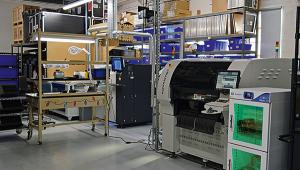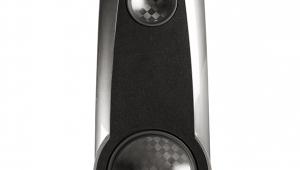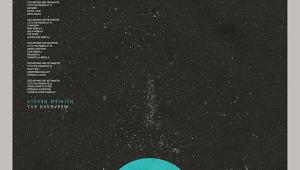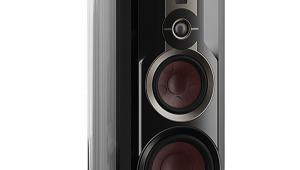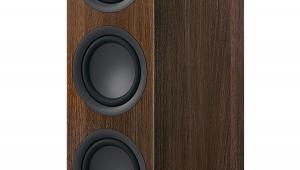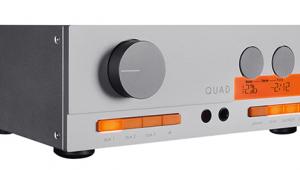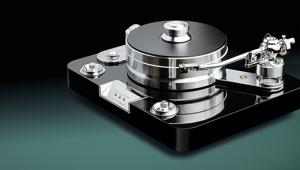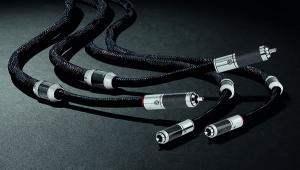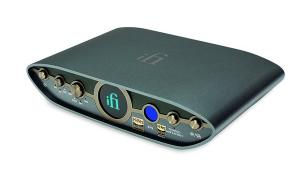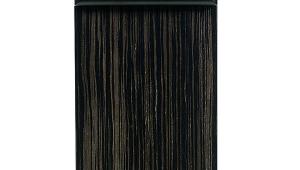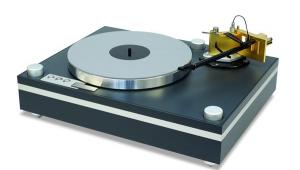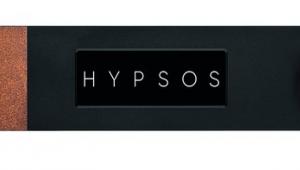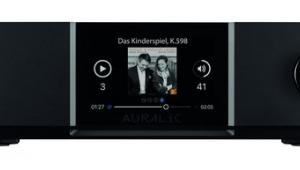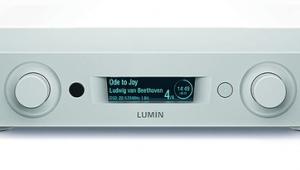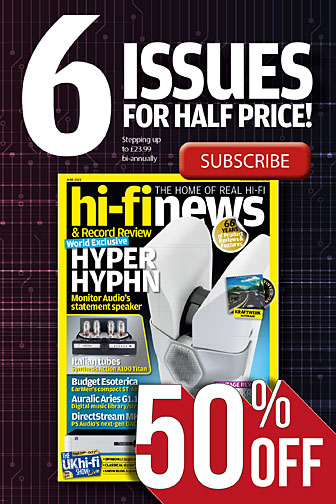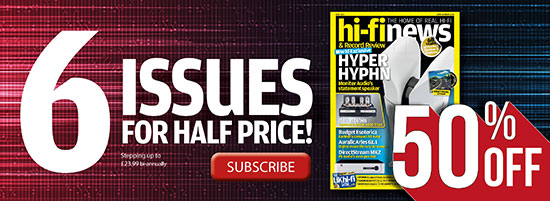Philips DCC-600 versus the Marantz DD-92


This review deals with two first-generation DCC players. Philips and other companies are committed to this medium, to judge from the fast expanding list of pre-recorded software, if not in the range of hardware to match. DCC will certainly not oust CD: it is better to think of it as a stepping stone between analogue compact cassette and the digital audio systems of the future – systems that must surely avoid the cumbersome format of tape. But for the time being, these machines may be counted a success.
Marantz DD-92
A pair of heavy alloy sidecheeks, a glittering champagne gold fascia and a copper-plated chassis are an effective camouflage for what is, broadly speaking, the bare bones of a DD-82 recorder. In fact, Marantz’s original literature makes it clear that the costlier DD-92 will benefit from a variety of ‘customised components in A/D and D/A and analogue circuits’ even if, in practice, the decision has been taken to unify the circuit design of both the DD-82 and DD-92.
These production electronics, in turn, are based on Philips’ DCC-900, including its double-sided PASC (precision adaptive sub-band coding) board, which supports the full range of sub-band filters, adaptive allocation, signal processing, error correction and sub-band coder ICs.
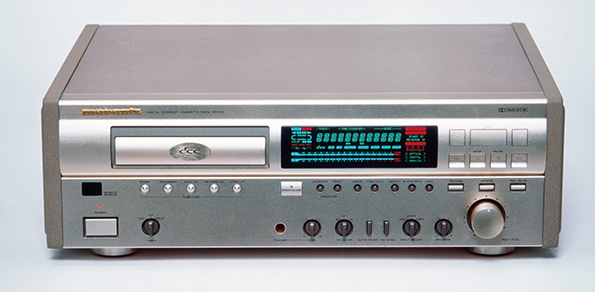
As far as the DD-82 and DD-92 are concerned, their joint claim to fame comes in the form of a second plug-in board that plays host to an 18-bit ADC (an AK5328) allied to a full Philips DAC7 output stage. This replaces the lower-spec AK5326 ADC and SAA7350 DAC deployed in the original DCC-900.
As for the controls, these are laid out in an elegant fashion, with the various erase, renumber, next [go to next side], reverse [reverse side at present tape position] and start markers all strung under the player’s loading bay. This leaves the main transport controls to the far right, with digital/analogue and Dolby B/C selectors beneath, and peripheral functions, for instance direct track access, volume, and AMS (automatic music scan), accessible via an accompanying remote control handset.
![]() Bloomin' lovely
Bloomin' lovely
Of the DCC recorders available, Marantz’s DD-92 has the most obvious character, an embellishment heard in its underscoring of strong bass rhythms and sweetening of abrupt percussive notes. This lends the DD-92 a certain flair, a sense of the dramatic that sets it apart from the more even-handed temperament of the DD-82 – though this is utterly lost to its analogue input, whose recordings sound, by comparison, rather flat.
Moreover, the manoeuvring of its digital input is better received with some styles of music than others, Annie Lennox’s Diva benefitting from the softer but warmer bloom of bass, a comfortable backdrop that mollifies the harsh sheen of her voice. The bite, crispness and transparency of the original CD suffer at the hands of PAS-coding, yet it soothes that raw hardness that still finds many vinyl lovers running from the digital medium.
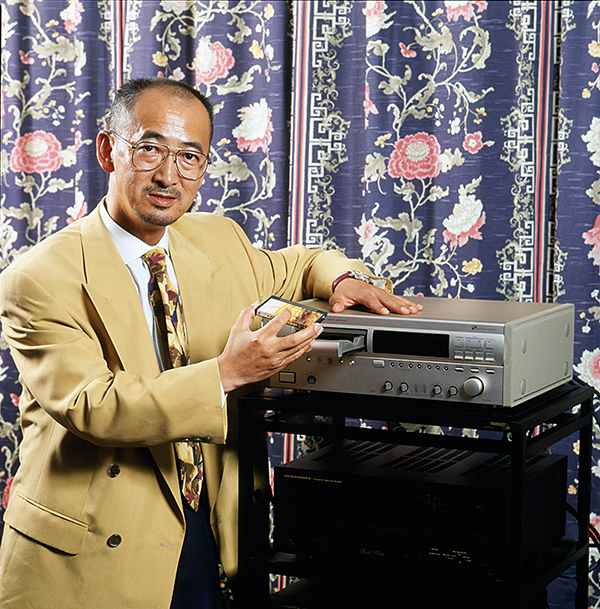
Equally, the DD-92 is probably the more proficient at extracting a rich, varied and compelling sound from pre-recorded DCC software. In fact, the smoother disposition of the (commercial) Annie Lennox tape is, in many respects, preferable to the colder sound of the competing CD! Then again, the analogue musicassette of the same title sounds depressing – a flat morass of sound lacking any hint of the life and sparkle evident from a half-decent compact cassette deck.
But where the DD-92’s manipulation is acceptable in one instance, in others this interference is unwelcome. The bass line from Joni Mitchell’s ‘Cherokee Louise’ takes on a grumbly quality, a dull roar that thickens the mix of instruments, pulls her voice from the front of the stage but allows the rawer tone of sax to escape into a more transparent ‘upper layer’ of sound. So the DD-92 does its best to ‘jazz-up’ the music despite this unnatural partitioning of instruments – an unavoidable result of PAS-coding methinks.
Philips DCC-600
This is a player that has evolved from the company’s earlier DCC-900 rather than being one packed with genuine second-generation technology. Yet differences do exist, as evidenced by the new sideways-loading RE-D mechanism and the rationalisation of its internal layout.
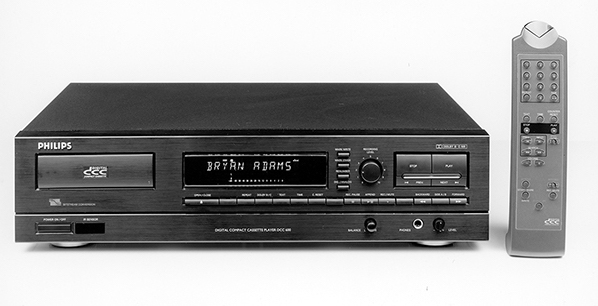
So, whereas the DCC-900 and its ilk host a plethora of PCBs, both the DCC-300 and DCC-600 are models of economy, from their compact transport mechanism and mini motherboard, to a variety of surface-mount components, data acquisition, PASC processing, ADC and DAC ICs. Streamlined construction then, but at its heart lies the same combination of sub-band filter, sub-band coder and adaptive allocation chips that we find in all of today’s machines.
Outside it’s a slightly different story, with Philips opting for the aesthetics of a DAT player! A simplified fluorescent display has been adopted, though this offers full text info plus prompts to help guide you through its novel facilities. The only oversight is the lack of an ‘overload’ message to supplement the 13-segment metering when recording via its analogue input.
If the DCC-600 looks a little less comprehensive than its costly cousins this is because various functions have been condensed onto single soft-touch controls. The next, reverse and auto start markers, for example, join the Dolby B/C noise reduction and digital/analogue input selection facilities on just three buttons. Omissions include an optical digital input/output (coaxial only), an AMS facility, and motorised volume control (fixed-out only). Nevertheless, any such loss in flexibility must be viewed in the light of its – by DCC standards – budget price.
![]() Reverb revelations
Reverb revelations
Compared with Marantz’s exotic DD-92, digital recordings on this lightweight player sound appropriately modest, smoother and more restrained than the originals. There’s not the same extension or impact to potent bass lines but recordings are warmer-sounding via the analogue input. Overall, its music sounds very tidy and ordered. Nevertheless, recordings on the DCC-600 are less conspicuous, a smooth, treacly wash of sound that requires little effort to absorb.
But listen a little harder and you’ll discover the DCC-600 lacks an entire stratum of low-level detailing – a simple consequence of its taking a more realistic stab at the basic building blocks of the music rather than struggling to recover those elusive inflections already consigned to the digital wasteland by its PASC processor. Pre-recorded DCC software is similarly undemanding, at its most entertaining with a simple acoustic recording such as Suzanne Vega’s ‘Tom’s Diner’ but troubled by the intensity of Kissin’s piano from DG’s Brahms’ Op. 116 Fantasias. Once again the dynamic foibles of PAS-coding are betrayed in the ambient ‘pumping’ that accompanies the wildly fluctuating scale of the central instrument.
With a more consistent dynamic theme these variations in ambience are less obvious, the artificial reverb added to ‘Tom’s Diner’, for example, is just as audible on this DCC tape as it is on the CD. The point is: such ambient clues, however contrived, are not always lost to the PASC editor – subjective evidence for the adaptive nature of Philips’ coding!
The DCC-600 makes a better job of handling pre-recorded analogue musicassettes than Marantz’s DD-92, the music rolling out with a bounce and enthusiasm sadly lacking in its expensive counterpart. The cream of £500 cassette decks would realise a crisper, more transparent and engaging performance. Yet it’s important to remember that the DCC-600 is a digital recorder first and an analogue playback machine second.

Lab report
There are two technical faces to every DCC recorder, two different areas of performance that hinge on the adaptive allocation of its PAS-coder. Ply the DCC recorder with single-frequency tones, for example, and the entire resources of the available ‘bit-pool’ have only to deal with this one frequency in one sub-band. There is no masking (other than the fixed ‘threshold of hearing’) so the panel of test results could as easily have been derived from a linear digital system like a CD player.
In this instance the range of THD (0.003-0.034% at 0dB), 97dB S/N ratio, the low-level linearity and 54dB stopband rejection are consistent with the SAA7321 DAC found in Philips’ DCC-600. So too are the 3rd/5th harmonics and rippled stopband images (V-patterns) on its standard 3D plot. Similarly, the raised profile of ultrasonic noise and reduced stopband patterns of the DD-92’s 3D plot are typical of its NPC SM5840 8x oversampling filter, the Philips SAA7350 noise shaper and TDA1547 DAC – as the entire shooting match revolves around a lower 11.3MHz clock frequency.
Furthermore, the technical advantages of Marantz’s DAC board are revealed in its lower 0.00061-0.018% THD, wide 106dB S/N ratio, improved low level/high frequency resolution and the accuracy of its de-emphasis. The advantages of an 18-bit ADC are rather less certain given the premature muting of all 20kHz signals below –70dB.
Nevertheless, this is the ‘linear’ face of both the DCC-600 and DD-92, a facade that crumbles once PASC gets to grips with a series of more complex music-like signals. Using an impulse to determine their frequency response gives us our first clue to the foibles of PASC, for this places data in all 32 sub-bands simultaneously and not from sub-band-to-sub-band in the fashion of a conventional 20Hz-20kHz frequency sweep.
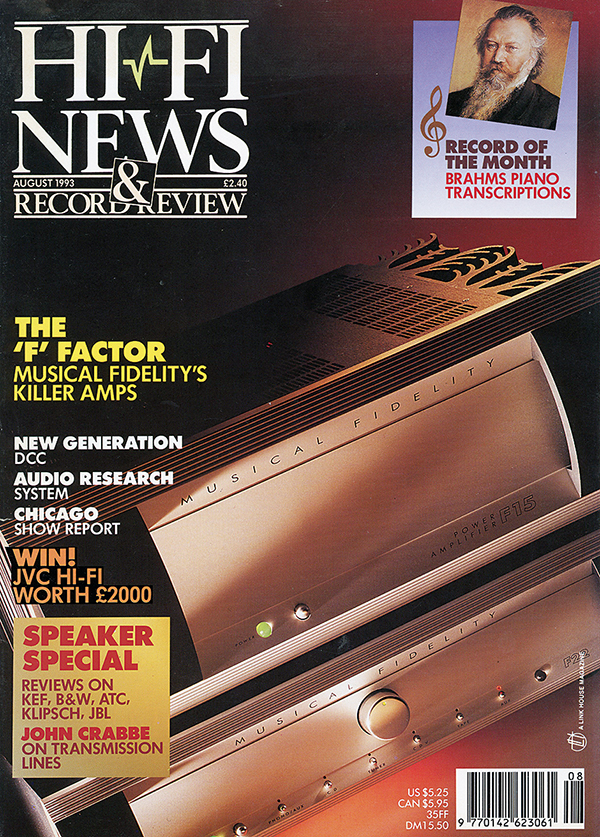
As PASC gives preferential treatment to its lower frequency sub-bands we see that both 0dB and ~60dB traces start off conventionally enough but begin to fall apart beyond 5kHz (sub-band 7 onwards) as the bit-pool dries up. At 60dB any information beyond 13.8kHz (sub-band 20) is discarded, considered inaudible or masked by the presence of information at lower frequencies.
Behind the mask
Similar impulses were employed on another series of special 3D plots. One demonstrated a mix of 20kHz (–20dB), a 500Hz-10kHz sweep (–5dB) and a series of broadband impulses (occupying all 32 sub-bands at a spectral level of –35dB). With PASC disengaged we could see this composite of signals emerging as they would, say, from a CD player based on an equivalent SM5840/SAA7350/ DAC7 chipset.
Throw PASC into the equation and we observed both masking and the adaptive allocation of bits in action. Reading the two subsequent plots, from bottom to top, the sub-bands 29 and 30 (19.29 to 20.67kHz) are allocated sufficient bits to encode the 20kHz tone, though sub-bands 23 to 28 (15 to 16 to 19.29kHz) go empty as the overall bit-pool is thoroughly drained by the information in sub-bands 1-22.
However, as the main frequency sweep accelerates past sub-band 5, the PAS-coder deems that (musical) information in adjacent sub-bands is progressively less audible. Bits are scavenged from these ‘inaudible’ sub-bands and re-allocated to sub-bands 23 to 28. Further up the plot, as the sweep reaches higher and higher frequencies, the degree of adjacent masking increases, constantly replenishing the bit-pool for allocation to other, ‘more audible’, areas of the spectrum.
Both the DCC-600 and DD-92 are equipped with the very same PAS-coder, yet there are subtle differences in their manipulation of data. Under the above conditions, the newer DCC-600 demonstrates slightly less masking in sub-bands 29 to 30 but suffers a higher level of noise-like modulation further up the plot. So is Philips making subtle revisions to its PASC mathematics?
Conclusion
Philips and Marantz may count their first-generation efforts heartily successful. That both the DCC-600 and DD-92 are discarding up to 75% of the input signal without reducing music to an unrecognisable pulp is something of a technological triumph. But though the data reduction adopted by Philips is adaptive it is not infallible. While music that is consistently complex is processed in an almost uniform fashion, dynamic contrast and grand changes in scale reveal the inadequacies of PASC. A recording of Mozart’s Sinfonia Concertante (K320d) highlights its sins to good effect, developing a fresh and atmospheric acoustic with the opening strings, only to find this impression of space dashed by the resonant tumult of lower strings, horns and woodwind.
During the climaxes the composure of the soundstage, the balance and proportion between instruments is utterly muddled, albeit momentarily. It is instances such as this where a CD player, and to a degree a good cassette deck, would maintain a more constant grip over the changing mood of the music. After all, changes in patterns of distortion are generally more audible than a uniform coloration!
